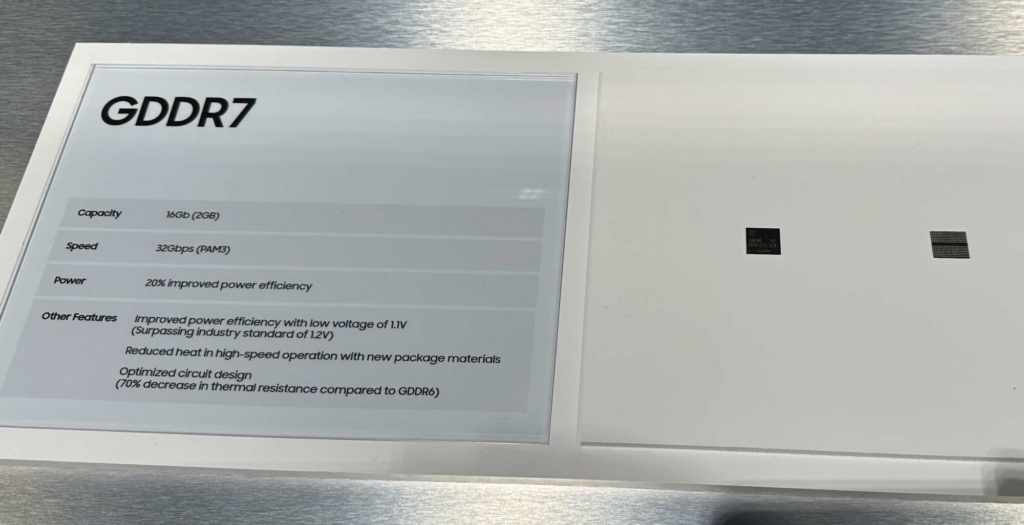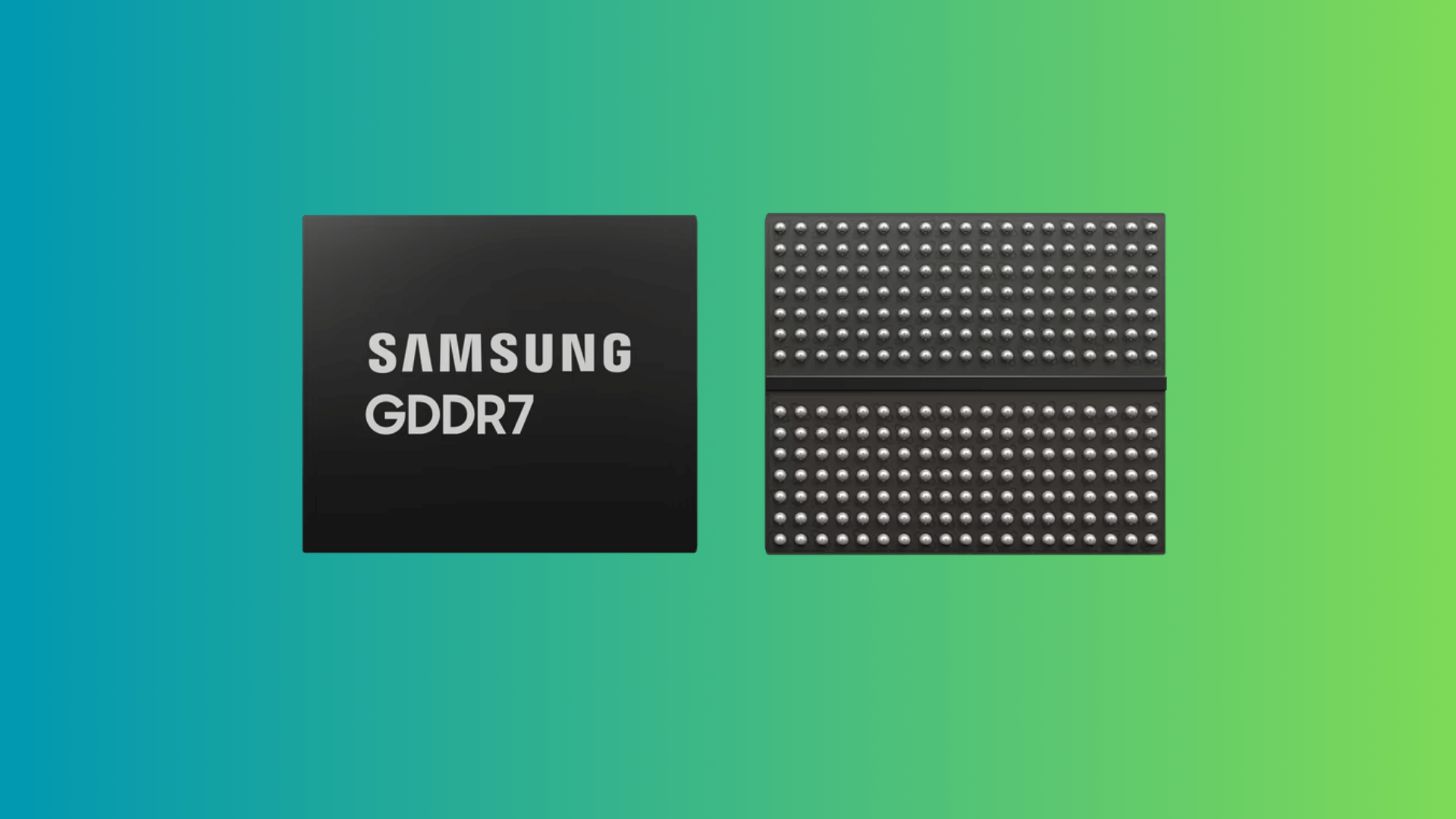Last Updated on July 22, 2024 by Team Yantra
It is finally time to jump to the next generation of memory specifications as Samsung gears up to supply memory to the RTX 50 series. First announced in 2023, GDDR7 DRAM promises superior performance and power efficiency, paving the way for the next era of hardware.
Samung GDDR7 at the GTC Event
NVIDIA’s GTC 2024 event unveiled the company’s initial Blackwell GPUs designed for data centers. HardwareLuxx attendees spotted Samsung’s GDDR7 memory, although the event provided no details about the gaming side of Blackwell, which will likely also incorporate this memory technology.

The initial GDDR7 modules offer transfer rates of 32 Gbps (using PAM3 signaling), a significant boost over GDDR6. With 16 Gb densities and 2 GB capacities per module, GDDR7 doubles the number of independent channels compared to its predecessor. Further advantages include:
- Power Efficiency: Operating at 1.1V means a 20% reduction in power consumption compared to GDDR6.
- Reduced Heat Output: Innovative packaging materials and optimized circuits significantly cut thermal resistance.
- Improved Reliability: GDDR7 integrates enhanced error correction and data integrity features.
JEDEC Specifications for GDDR7
The recent release of final GDDR7 specifications by JEDEC sets the stage for widespread adoption. These specifications support densities up to 32 Gbit, 2-channel mode for doubled capacity, and advanced RAS capabilities.
GDDR7 memory introduces a new way of sending signals called Pulse Amplitude Modulation (PAM). Its PAM3 interface improves signal integrity (SNR) and power efficiency. PAM3 uses three voltage levels (+1, 0, -1) to send 3 bits across two cycles, outperforming NRZ’s 2 bits over the same duration. This leads to a faster data rate and overall performance gains.
JEDEC also addresses the need to ensure superior RAS (Reliability, Availability, Serviceability) by implementing robust data integrity features. These include:
- On-die ECC (ODECC) for immediate error correction and reporting.
- Data poison for preventative error mitigation.
- Error Check and Scrub for continuous background error detection.
- Command address parity with command blocking (CAPARBLK) for robust command handling.
GDDR7: The Future of Gaming GPUs
While initial GDDR7 modules will run at 32 Gbps, even faster variants are in the pipeline. Sources suggest that NVIDIA’s next-generation GeForce RTX 50 series could leverage optimized 28 Gbps GDDR7 dies, potentially offering configurations with massive memory bandwidth to power ultra-high-resolution, immersive gaming experiences.
The ease of overclocking found in GDDR6/GDDR6X modules should carry over to GDDR7, allowing enthusiasts to push performance even further. We anticipate the first GDDR7-equipped graphics cards to launch later this year.
With GDDR7, Samsung solidifies its position as a key player in the graphics memory market. GDDR7’s gains in speed, efficiency, and reliability will drive a new generation of powerful, immersive gaming experiences.

Leave a Reply
You must be logged in to post a comment.